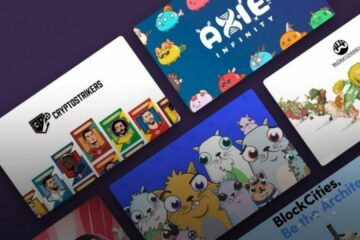NFTs are a type of crypto-token that is used in the decentralized finance space. The article will provide a brief overview of what DeFi is, why it’s important and how NFTs can be utilized to create new DAPPS (Decentralized Applications).
The concept behind DeFi is fairly simple: instead of having centralized institutions hold assets for people, you transfer ownership over these assets to the blockchain. In order to do this, there needs to be some sort of system that allows users to securely store their private keys. This leads us into the discussion about NFTs and how they could be used in DeFi. If an individual owns a tokenized asset on Ethereum or EOS through Metamask or Scatter, they will be able to transfer it to Decentralized Exchanges (DEXs). These decentralized exchanges allow users to safely and securely transact their tokenized assets between one another without giving up custody of the asset.
What is DeFi and why it’s important?
DeFi, which stands for decentralized finance, is a trail of trailblazing projects that are focused on creating new systems of finance that are not only centralized. A main concern with the current system is that it relies on intermediaries to operate efficiently. For example, Leo is a blockchain-based loan platform where borrowers can get loans from lenders, but the borrower has to put up collateral in order to get their loan approved. This is great for lenders because they know they will always get their collateral back, but it’s terrible for borrowers because they have to forfeit some of their assets every time they take out a loan.
How NFTs can be used in DeFi to create new DAPPS?
A DAPP (Decentralized Application) can be created by anyone who has the technical know-how and time to do so. It’s important for people to have access to these tools because they allow them to create their own platforms without having any centralized authority or company controlling it. By creating an open source DAPP, the decentralized finance community can become self-sufficient in developing new platforms instead of having to rely on companies. You can find more information on this in Jon Choi’s article here .
How are NFTs being used for DeFi?
NFTs are being integrated into different projects that fall under the umbrella of decentralized finance, which include Decentralized Exchanges (DEX), Derivatives, Prediction Markets , Marketplaces, Payment Systems and much more. What makes these projects decentralized is that they aren’t controlled by any one person or company. There is no central authority involved to make decisions about how each platform should work or what features they should have. All of the platforms operate autonomously without anyone having control over them. This means that all the rules are set in place for how it should function, but users can always choose to modify it through their interactions with the DAPP.
This decentralized approach allows people to choose which platform they want to use without having to rely on a centralized service that may go offline or shut down at any time for any reason. It also encourages open source development so that users can create their own vision of what they want out of these platforms by contributing to its overall development. This means there are more opportunities for developers who want to build new tools and features than what’s already available in current services.
NFTs are unique because unlike traditional tokens, they’re built specifically for the purpose of creating digital scarcity—for proving ownership of an asset digitally instead of physically . With this unique property, NFTs allow DAPPs to create verifiable ownership records. Since the blockchain is a public ledger that stores information in an immutable fashion, it’s the perfect solution for creating ownership records that are stored publicly where no central organization can control or change any data on their own without them knowing about it.
What this means is that NFTs can be used by DAPPs to prove who owns what in order to build different kinds of platforms not seen before with traditional tokens. This may include building decentralized marketplaces where people can trade digital assets they own, decentralized prediction markets where users can place bets on whether something will happen or not and more complex projects like Decentralized Organizations (DO which are completely autonomous entities run by a group of members who can control how they operate.
What kind of projects have been built using NFTs so far?
There are a lot of different examples of DAPPs being created to provide new dServices on top of their unique utility as the basis for verifiable ownership records. These dServices all fall under some category or another that you may be familiar with from traditional centralized platforms, but each one offers a different experience. Some examples include: CryptoKitties Swarm City Augur BitBay EthFiddle Codius uPort Basic Attention Token Oasis Labs CIVIC Virtue Poker Blockstack Decentraland District0x Casa BigchainDB ShoCard Livepeer SWARM Lendroid Counterfactual Front Back ZeppelinOS CargoX
Conclusion
The unique utility of NFTs allows for the creation of new decentralized finance platforms that can provide different services than what’s already available with traditional centralized service providers. As blockchain technology continues to develop, more projects will be built on top of this foundation. And as these projects grow, they’ll create synergies between each other where people can use them all within the same DAPP instead of having to rely on multiple different types of services to get things done. This means there are more opportunities for developers who want to build new tools and features than what’s already available in current services—all it takes is creating a project that adds value where others aren’t focusing their attention so far.



0 Comments